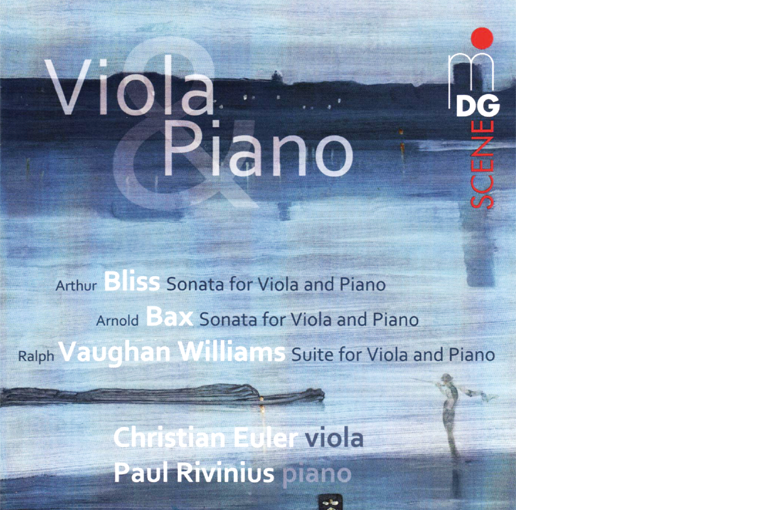“Of all the instruments of the orchestra, the viola is the one whose excellent qualities have been ignored for the longest time. It is just as nimble as the violin, the tone of its low strings possesses an attraction all its own, its high notes dazzle through their sad = passionate expression, and its sonic character in general, of profound melancholy, differentiates it clearly from the other string instruments. … If a musician was incapable of properly performing as a violinist, then he took up the viola. This is the reason why violists could neither play the violin nor the viola. I must even confess that this prejudice against the viola part has not been completely eradicated even in our time, for there are still viola players in the best orchestras who cannot cope with either the violin or the viola. However, one has more understanding, from day to day, for the awkwardness that results from the toleration of such people, and thus the viola is being gradually entrusted only to skilled hands, like the other instruments.”
The prophetic words of the romantic firebrand Hector Berlioz, who sent his viola-playing Harold on an Italian adventure, was only actually fulfilled in the 20th century, when Lionel Tertis and William Primrose – for Christian Euler he is, alongside Fritz Kreisler, Jascha Heifetz and Emanuel Feuermann, the fourth in the string quartet of personal heroes – two masters of their instrument, appeared. Strongly inspiring powers emanated from them, as well as the recognition that, just as one should not prejudge people, one should not instruments according to their appearance, either. We may count the enthusiastic viola player Paul Hindemith along with these two outstanding virtuosos, as one who from his own activity knew very well that one must not confuse the basement of the strings with the ground floor not with the first floor. If we then consider the British composers Arnold Bax, Arthur Bliss, William Walton and especially York Bowen, still underestimated and underrated in our country, who enriched the viola literature quantitatively and qualitatively in a similar way to that of the eleven-year-younger Hindemith, then we arrive at a quite substantial number of artists who turned the helm in favour of this instrument – an instrument about whose players there are probably more jokes in circulation than are told about the double bass, percussion and/or horn.
The joke – often enough the result of bitterly concrete truths that are then more or less perpetuated out of ignorance and slung around as catch-phrases – usually disintegrates in moments of insight that can neither be brought about by sermonising nor through any rationale plethora of data. The words of Richard von Schaukal, according to whom one only arrives at the interior region of art through grace (in other words: enlightenment), applies here, as everywhere. At the right moment, there arises an unexpected constellation, a note strikes sympathetic strings, a beam of light falls from a previously unknown corner onto a possibly long-known object – and all at once, that which until now seemed “known” now appears invalid in the extreme. And an intense interest replaces the phrase, an interest that desires nothing so much as to fill the vacuum closed off by keywords.
Of course I knew how much Wolfgang Amadeus Mozart loved the viola, using it splendidly, putting it into play with vehemence against his father’s instrument in his great Sinfonia concertante in E-flat major, K. 364. Robert Schumann’s Märchenbilder, Op. 113 have doubtless long had their place on the music and CD shelves, and Paul Hindemith’s roughneck finger-breakers can meanwhile disseminate their half-subversive delights. A genuine settling process, however, a real tuning-in on the viola and its special qualities, did not take place. The fact that four and a half steps, or a fifth under the G-string of the violin (which, I surmise today, Serge Prokofiev longed for when he composed the opening of his Opus 63), the fact that there, between the velvety, glowing regions of the violoncello and the brilliant capacities of the devil violin, a world all its own can be found, a parallel universe: this only dawned on me – I admit it openly without any blushing – when I intensively occupied myself with the Sonata of Sir Arnold Bax recorded by Christian Euler and Paul Rivinius for their homage to Lionel Tertis. To put it more concretely: the finale of the work, one of those mighty concluding elegies of the kind that we could also live through in various symphonies of this composer – this Molto lento unfolded new emotional layers and sonic levels with each round, until finally the individual stood before me, completely unmistakeably, truly summoning me with its own eloquence to part company from any past intransigence.
That’s how it happened. Enriching encounters and re-encounters followed the object lesson. Clichés were suppressed to the extent that the vacuum disappeared. Works unknown until now (I once again refer to York Bowen and his fabulous viola compositions, made accessible to me by Christian Euler), new criteria of the listening empathy caused by an increasing ability to differentiate on formerly fallow land – if this is the result of single production, then one can only respectfully take one’s hat off to said production. Which is what I am hereby doing, at this point, with the expression of my highest esteem …
Rasmus van Rijn (XI/2013)

